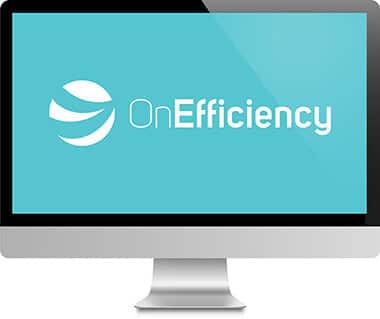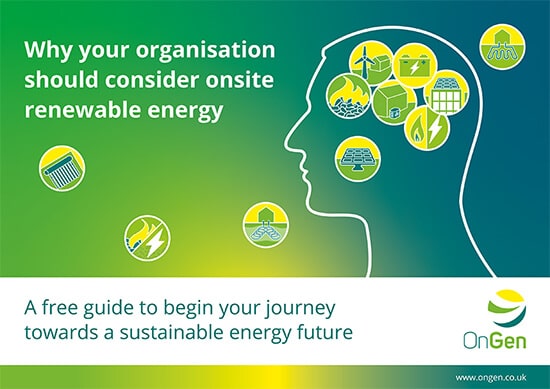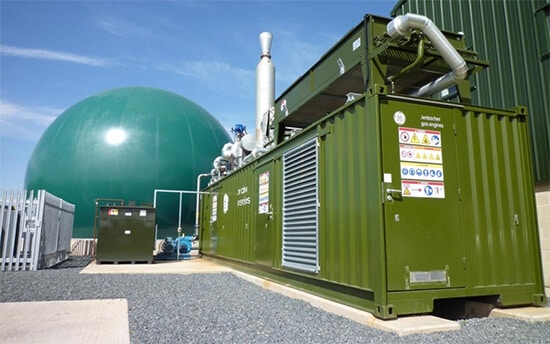Air Source Heat Pumps

What are air source heat pumps?
An air source heat pump (ASHP) is typically located on the outside of a building and connected through the wall to an internal unit. They can provide hot water, used for underfloor heating, over-sized radiators or potentially domestic hot water, or warm air, used to directly heat a room.
ASHPs require a lot less energy than a conventional boiler. While a conventional immersion heater will supply one unit of heat for every unit of electricity, a heat pump will supply 2-3 units of heat per unit of electricity.
Air-to-air ASHPs transfer heat absorbed from the air outside into the inside via central heating fan systems. In air-to-water ASHPs, the heat produced raises the water temperature in a storage tank which supplies a low-pressure hot water distribution system for space heating.
ASHPs require a lot less energy than a conventional boiler. While a conventional immersion heater will supply one unit of heat for every unit of electricity, a heat pump will supply 2-3 units of heat per unit of electricity.
Air-to-air ASHPs transfer heat absorbed from the air outside into the inside via central heating fan systems. In air-to-water ASHPs, the heat produced raises the water temperature in a storage tank which supplies a low-pressure hot water distribution system for space heating.
How do air source heat pumps work?
As with ground source and water source heat pumps, ASHPs work in a similar fashion to a refrigerator. The ASHP contains an outside unit where the fan draws air over the heat exchanger. The heat begins the evaporation process within a refrigerant liquid.
A compressor is used to increase the temperature of the refrigerant as it converts to a gas and enters a heating coil. The compressor requires electricity to complete the compression processes; when outside temperatures are lower, the ASHP’s compressor must work harder to achieve the desired temperature. In an air-to-air system, a fan blows air over the heating coils to lift the temperature of the room; in an air-to-water system, the heating coils run through a body of water in a thermal store (water cylinder) which is drawn off to heat radiators and underfloor loops.
As the gas loses its heat, it begins to condense back into a liquid. An expansion valve assists with this phase change process. The colder refrigerant, in the form of a liquid, returns to the outside unit with the fan and heat exchanger where the process starts again. Heat can be extracted from the air even when it is close to freezing due to the vast amount of air being blown over the heat exchanger and the low to high pressure phase change characteristics of the refrigerant. However, the air does not store heat as well as the ground, so an ASHP will be less efficient in the winter when the air temperature is colder.
During colder periods, when the outside temperature is low and the inside temperature is higher, additional electrical elements may be used to boost the heat of the water or air being used to heat the building. In these instances, this will drop the efficiency of the ASHP.
They can also provide domestic hot water, but this greatly reduces the Seasonal Performance Factor (SBF) due to the higher delivery temperatures required. The lower the required output temperature from a heat pump, i.e. the smaller the temperature lift, the greater the system SPF.
A compressor is used to increase the temperature of the refrigerant as it converts to a gas and enters a heating coil. The compressor requires electricity to complete the compression processes; when outside temperatures are lower, the ASHP’s compressor must work harder to achieve the desired temperature. In an air-to-air system, a fan blows air over the heating coils to lift the temperature of the room; in an air-to-water system, the heating coils run through a body of water in a thermal store (water cylinder) which is drawn off to heat radiators and underfloor loops.
As the gas loses its heat, it begins to condense back into a liquid. An expansion valve assists with this phase change process. The colder refrigerant, in the form of a liquid, returns to the outside unit with the fan and heat exchanger where the process starts again. Heat can be extracted from the air even when it is close to freezing due to the vast amount of air being blown over the heat exchanger and the low to high pressure phase change characteristics of the refrigerant. However, the air does not store heat as well as the ground, so an ASHP will be less efficient in the winter when the air temperature is colder.
During colder periods, when the outside temperature is low and the inside temperature is higher, additional electrical elements may be used to boost the heat of the water or air being used to heat the building. In these instances, this will drop the efficiency of the ASHP.
They can also provide domestic hot water, but this greatly reduces the Seasonal Performance Factor (SBF) due to the higher delivery temperatures required. The lower the required output temperature from a heat pump, i.e. the smaller the temperature lift, the greater the system SPF.
How are air source heat pumps applied to a building?
A fan draws air through the outside unit of the ASHP, this must not be covered in a way that blocks inlet to the fan. It can be hidden away to some extent, but there needs to be space directly outside the building to promote a good flow of air.
Depending on the site optimal installation would position the outside fan away from the direction of prevailing winter winds. ASHPs are sensitive to large drops in air temperature, shielding them in this way can help to safeguard the SPF.
For larger units, there may also need to be planning considerations. Noise can be an issue as the external fan units can generate a considerable level of noise; this can be exacerbated if the pump is not sited correctly, e.g. where noise echoes or can vibrate against a wall or fitted close to a resident (bedroom) windows. Building Regulations such as the Scottish Building Regulations Section 6 for Non-Domestic Energy have targets for minimum air sound insulation and maximum impact sound transmission which must be verified with post installation testing. An ASHPs line of sight and proximity to domestic and residential buildings will be a key factor in securing planning permission.
As with ground source and water source heat pumps, ASHPs require electricity to power the heat pump. Unless this electricity is provided by other onsite renewables (e.g. wind or solar PV), a running cost is incurred as well as greenhouse gas emissions. The extent of this depends on the Seasonal Coefficient of Performance (SCoP) of the heat pump which, in turn, relies on the ambient conditions of the site and the water/air temperature required. However, significant savings can be made compared to a conventional boiler system.
ASHPs can be retrofitted relatively easily, assuming there is space for the outdoor unit and, in the case of an air-to-water heat pump, a thermal store (water cylinder). However, ASHPs are best suited to low temperature applications, such as underfloor heating, thus installing them in poorly insulated buildings is not appropriate. ASHPs deliver heat at lower temperatures over much longer periods so, if the heat losses from the building fabric are too high, the heat provided by the ASHP will simply be lost. It may be necessary to upgrade the building’s insulation before installing an ASHP to get the best SPF possible.
Depending on the site optimal installation would position the outside fan away from the direction of prevailing winter winds. ASHPs are sensitive to large drops in air temperature, shielding them in this way can help to safeguard the SPF.
For larger units, there may also need to be planning considerations. Noise can be an issue as the external fan units can generate a considerable level of noise; this can be exacerbated if the pump is not sited correctly, e.g. where noise echoes or can vibrate against a wall or fitted close to a resident (bedroom) windows. Building Regulations such as the Scottish Building Regulations Section 6 for Non-Domestic Energy have targets for minimum air sound insulation and maximum impact sound transmission which must be verified with post installation testing. An ASHPs line of sight and proximity to domestic and residential buildings will be a key factor in securing planning permission.
As with ground source and water source heat pumps, ASHPs require electricity to power the heat pump. Unless this electricity is provided by other onsite renewables (e.g. wind or solar PV), a running cost is incurred as well as greenhouse gas emissions. The extent of this depends on the Seasonal Coefficient of Performance (SCoP) of the heat pump which, in turn, relies on the ambient conditions of the site and the water/air temperature required. However, significant savings can be made compared to a conventional boiler system.
ASHPs can be retrofitted relatively easily, assuming there is space for the outdoor unit and, in the case of an air-to-water heat pump, a thermal store (water cylinder). However, ASHPs are best suited to low temperature applications, such as underfloor heating, thus installing them in poorly insulated buildings is not appropriate. ASHPs deliver heat at lower temperatures over much longer periods so, if the heat losses from the building fabric are too high, the heat provided by the ASHP will simply be lost. It may be necessary to upgrade the building’s insulation before installing an ASHP to get the best SPF possible.
The three-step process to net zero energy
OnGen offers a three-step process through OnGen Expert, OnEfficiency & OnSupply. Steps can be done holistically or separately.

Step 1:
Reduce energy consumption:
With OnEfficiency, we can help you identify where and what you can do to reduce energy consumption and improve energy efficiency.
By becoming more energy efficient, carbon emissions for your organisation will begin to reduce, along with the cost of energy.
By becoming more energy efficient, carbon emissions for your organisation will begin to reduce, along with the cost of energy.

Step 2:
Consider onsite renewable energy and battery storage:
With the OnGen Expert, we can help you explore the feasibility of generating and storing your own energy via a range of onsite renewable energy generation sources, like solar PV and heat pumps.
Switching to generating renewable energy onsite reduces the demand for grid-supplied energy, lowering the cost of energy bills, gaining resilience to grid fluctuations and reducing carbon emissions.
Switching to generating renewable energy onsite reduces the demand for grid-supplied energy, lowering the cost of energy bills, gaining resilience to grid fluctuations and reducing carbon emissions.

Step 3:
Switch to zero-carbon energy suppliers:
With OnSupply, we can help you find the cheapest green energy tariffs for any grid-supplied gas and electricity demand.
Eliminate the remaining energy-related carbon emissions for your organisation.
Eliminate the remaining energy-related carbon emissions for your organisation.
Your organisation will be assigned a dedicated account manager, who will offer training support and guidance. Additionally, if your organisation is struggling for time, the Managed Service, where assessments are conducted by the OnGen team on your behalf, can be a great option.

Talk to one of our team
Book a 20-minute conversation to discuss how we can help you by providing the right information, to make the right decisions.


Download our free Renewable Energy Guide
Case Study
“By assessing solar capability using the OnGen Expert software, we have been able to identify 4,000 tonnes of potential carbon savings in our city-centre building stock. OnGen has made it simple and easy for us to demonstrate potential energy costs savings of £2.9 million across the lifetime of potential onsite renewable installations. The OnGen Expert software has shown us the potential of onsite generation at a fraction of the cost of traditional assessments/consultants.”
NEYH
Book a conversation with OnGen today
Interested in finding out more information? Set up a meeting with a member of our team to discuss how we can help you.









